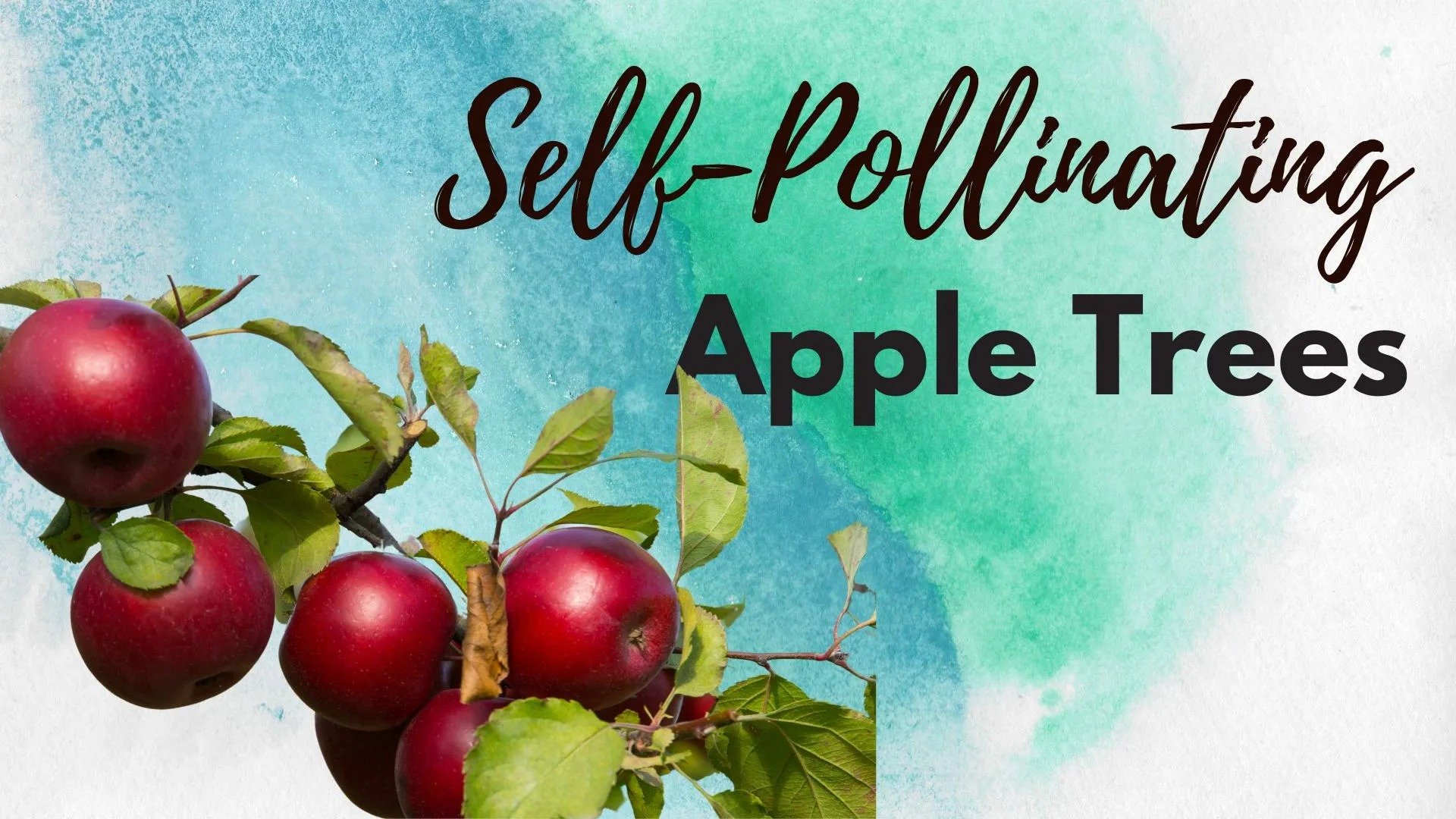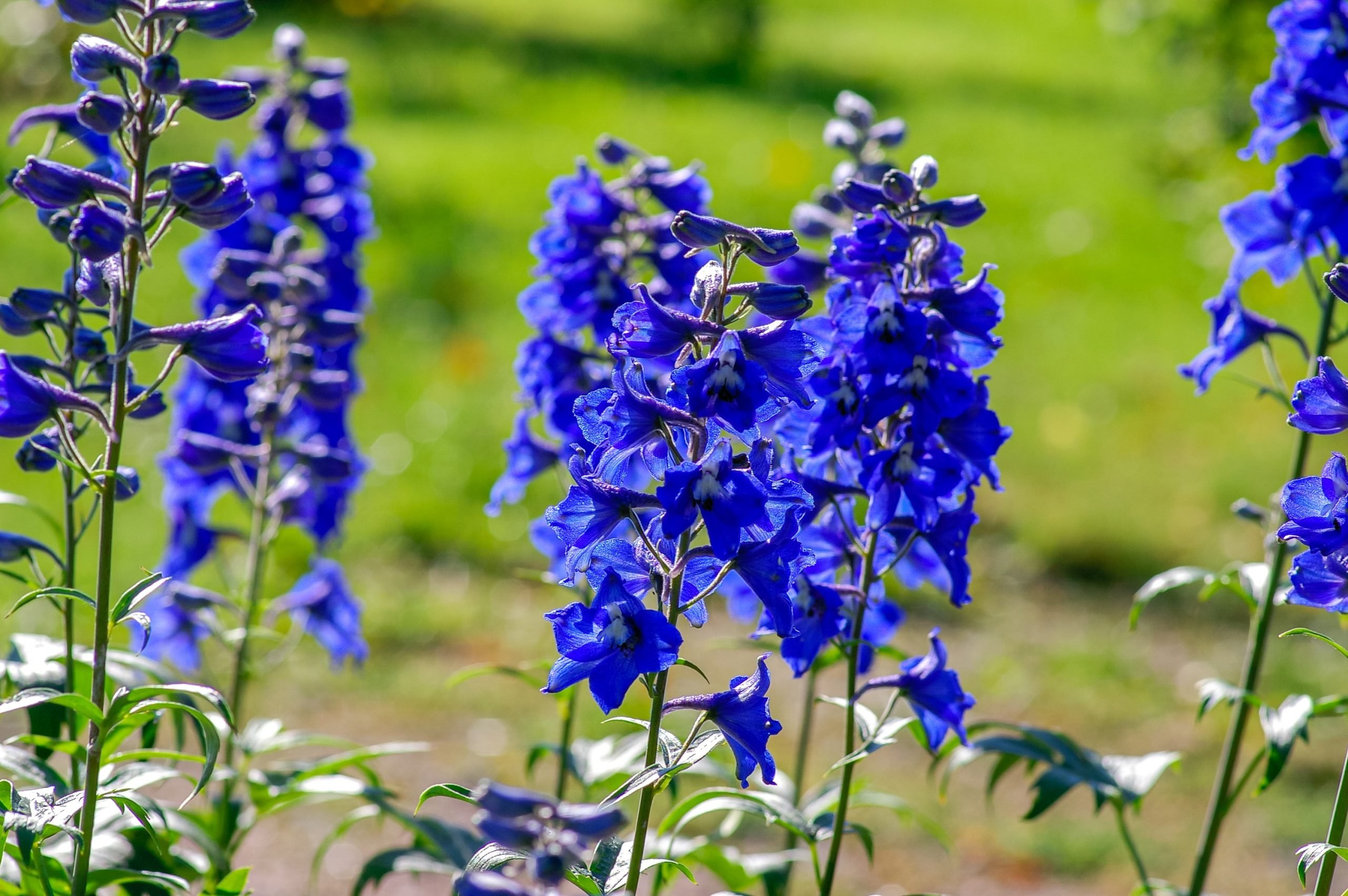Discover 14 Flowering Clematis Varieties That Thrive In Shade

Table of Contents
Wondering what to do about that shady part of your garden or that north-facing wall that invites less sunlight? Worry not, as we have some great suggestions for you. Clematis varieties are a perennial favourite among florists due to their versatility. Clematis are perennial climbers and produce colourful blooms to give an ornamental touch to your garden or walls. Even though clematis demands an adequate amount of sunlight in general, there are a lot of other plants that could be grown in the shade as well!
The amount of shade or sunlight an area receives will have a direct effect on the plants growing there. Hence, care should be taken while choosing the right plants for your garden. Clematis varieties that bloom twice a year will be more suitable for planting in the shade.
In this article, we will explore the clematis varieties that are suitable for your hard-to-grow, mostly shady areas in the garden.
Flowering Clematis Varieties Perfect for Growing in Shade
1. Clematis Alpina
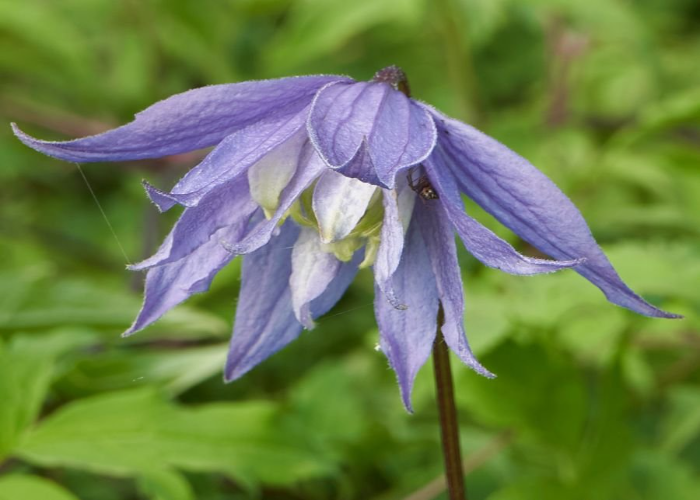
Clematis alpina is a plant that belongs to Asia and Europe. They produce attractive, bell-shaped blue flowers at the start of the spring season. If you are looking for a climbing vine plant for the shady areas of your garden, this flowering clematis will be a good choice to consider. Alpina is a partial-shade-tolerant clematis and is very easy to care for. Pruning Alpina can be done after flowering, and this will help you keep the plant in good shape. With a minimal amount of shade and well-drained soil, this beautiful clematis variety will give a touch of colour to the shady areas of your garden.
2. Clematis Nelly Moser
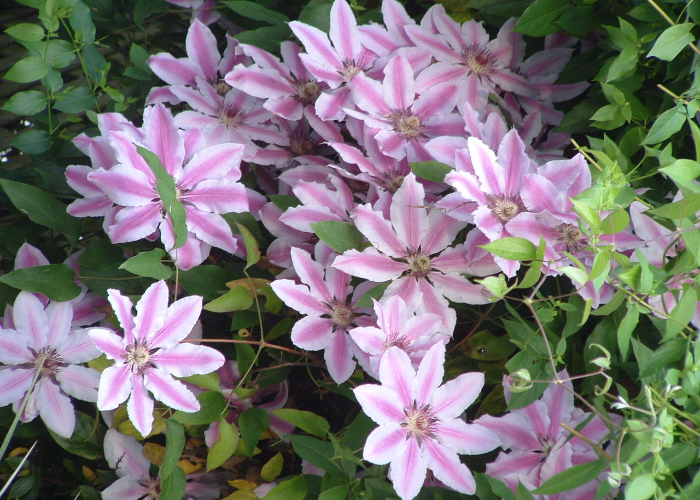
Nelly Moser is one of the most famous flowering plants when you are looking for the right clematis to grow under shade. With its bright pink flowers with yellow stripes, this plant will be a great addition to your garden. The blooming period of this nelly moser is during the late spring and early summer. They grow up to 8–12 feet in length, and the flowers will have an approximate diameter of around 6 inches. If you are looking for a flowering plant to grow on fences, trellises, or arbours, nelly moser will be a great pick. Nelly mosers are florists’ favourites, and one of the main reasons for this is their low-maintenance nature. With the right pruning, adequate watering, and the provision of balanced fertilisers, you can achieve the best results.
3. Clematis Macropetala
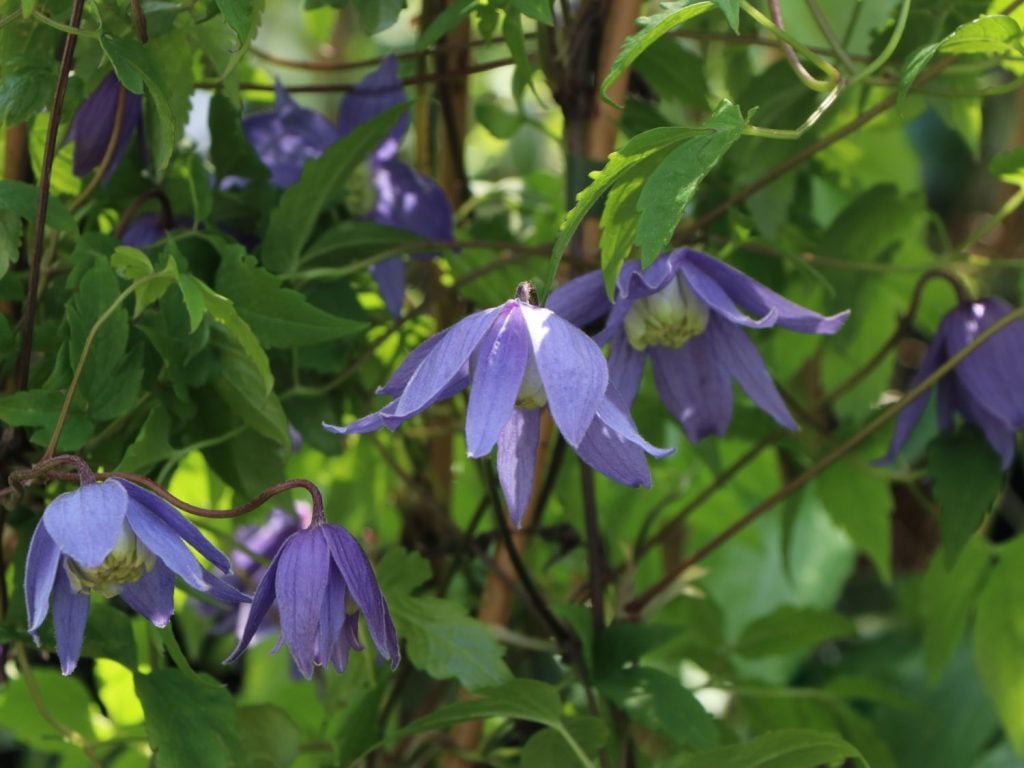
Clematis macropetala, also known as downy clematis, is a perfect clematis flowering plant for shady areas. They produce flowers in lavender, pink, or blue. These beautiful flowers will be bell-shaped, and they bloom in late spring or early summer. You can grow this plant on the ground, in arbours, or on trellises at your convenience, and it can grow up to a height of 15 feet. These plants provide the best results when grown in partial shade in well-drained soil.
4. Clematis Armandii
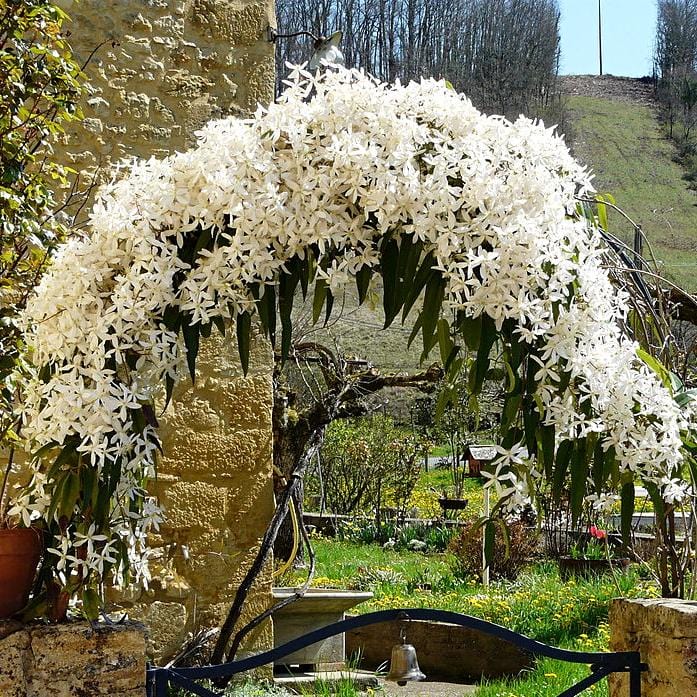
Clematis armandii is a flowering plant you must consider planting in your garden. They produce daisy-white flowers in abundance and will be a treat for sore eyes. This plant is a vigorous climber and will be befitting if planted on an obelisk, trellis, etc. One thing to note while going for this clematis flowering plant is that it might need extra care during the winter as it can’t withstand extreme cold. You might have to move them to a sheltered space or provide a similar hospitable environment during the winter. You can either plant them apart or twine them together according to the touch of beauty you want to provide for your garden.
5. Clematis Patricia Ann Fretwell
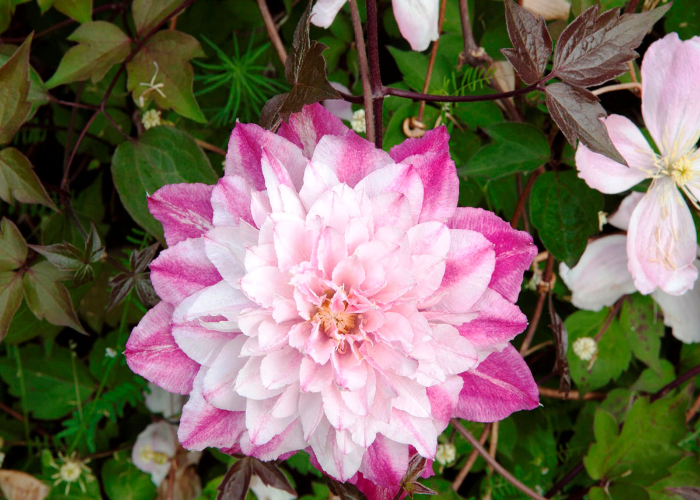
Give your garden a double touch of beauty by planting clematis. Patricia Ann Fretwell. This variety of clematis flowering plants produces double flowers during the spring season in double colours! This plant can be grown in partial shade and requires a supporting structure to climb properly. With an alkaline soil base and space to spread its roots, this clematis plant should be pruned just above the new buds in the early spring for the best results. These plants take a season or two to get used to their environment, and once settled, they will be one of the best attractions in your garden!
6. Clematis Montana
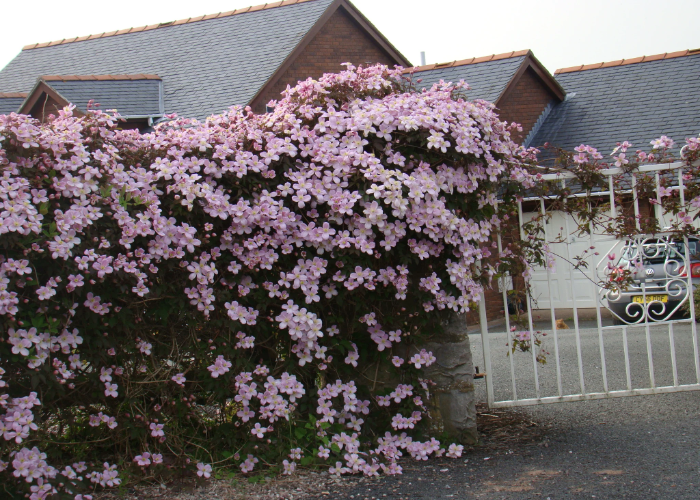
When you are looking for partially shaded clematis, or any clematis variety for that matter, Clematis Montana is a name you will often come across. This widely popular clematis variety, also known as the Himalayan Clematis, produces pink star-shaped flowers in abundance. They grow well in partial shade and in moist but fertilised soil. This low-maintenance plant requires no pruning, and it comes under pruning group 1. Although you might have to chop down the dead parts of the plants if you notice any to maintain their looks,
7. Clematis Rouge Cardinal
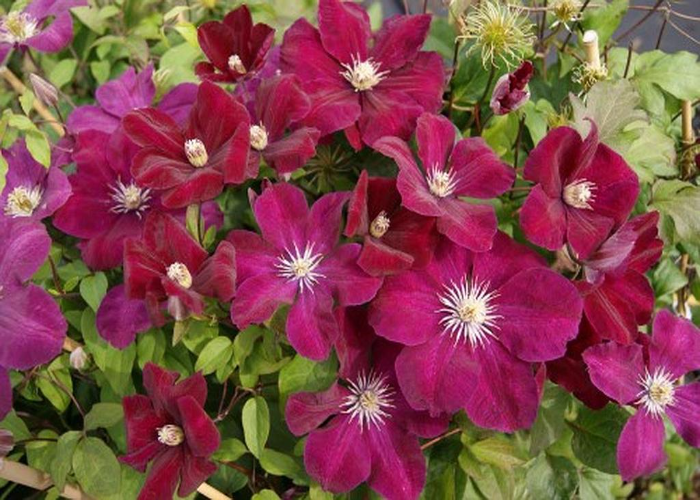
These clematis flowering plants produce beautiful red blooms during the summer and last until early autumn. Rouge Cardinal produces large red-coloured flowers, which makes it a standout among other flowers in your garden. These plants can be grown in partial shade and can grow up to 4 metres in height. These beautiful flowering plants require ground-level pruning after each flowering season, and they belong to the level 3 group of pruning.
8. Clematis “The President”
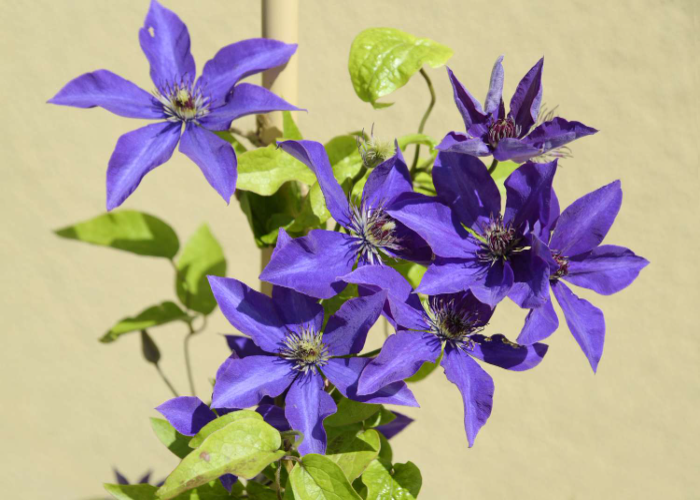
Just like its name suggests, ‘The President’ will be a unique addition to your garden. These clematis flowering plants produce large flowers in a deep blue colour. These flowers can grow up to 18 cm in size, and along with dark green foliage, they look really attractive. The flowering period of these plants starts in late spring and ends at the end of autumn. These plants are suitable to plant in partial shade but might need extra care as risks of clematis wilt and slime flux are present. Hence, it is advised to plant the stem of this plant a bit above ground level.
9. Clematis Guernsey Cream
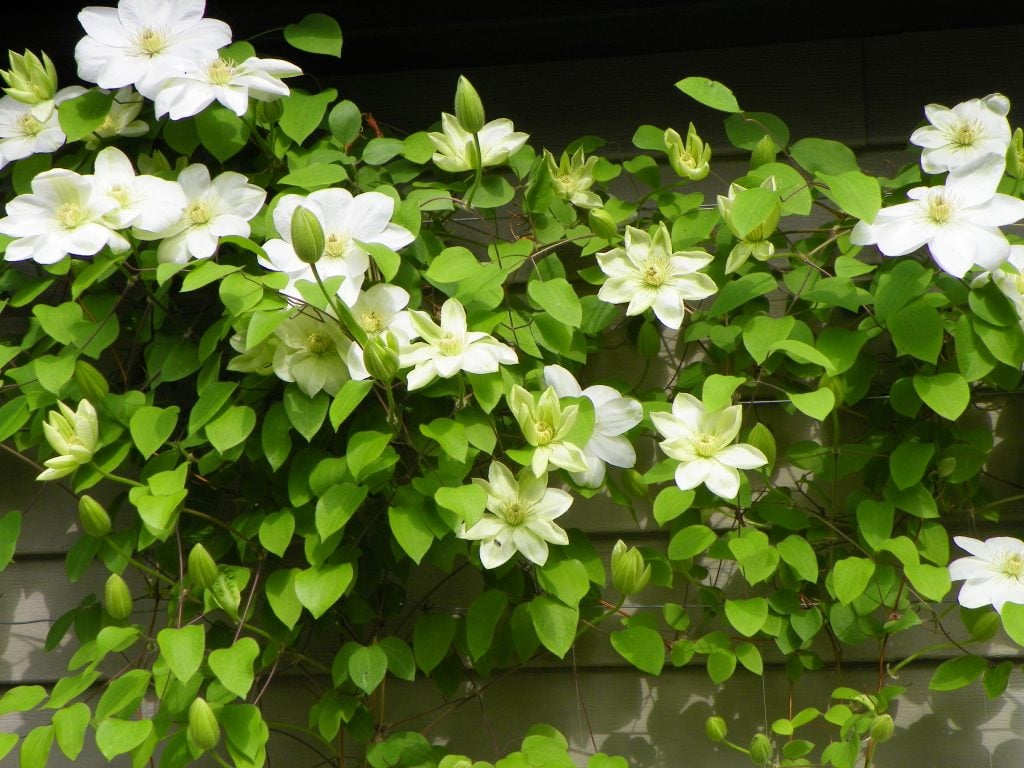
The Guernsey Cream Clematis produces large white flowers and is known for blooming twice per season. For those who are looking for clematis varieties that are shade-tolerant and that grow quickly, these clematis flowering plants will be the best option. During the time of bloom, the flowers appear yellowish in nature and will slowly turn to a cream colour before withering. They are suitable to be planted in well-drained soil, and as they are fast growers, constant pruning is required.
10. Clematis Niobe
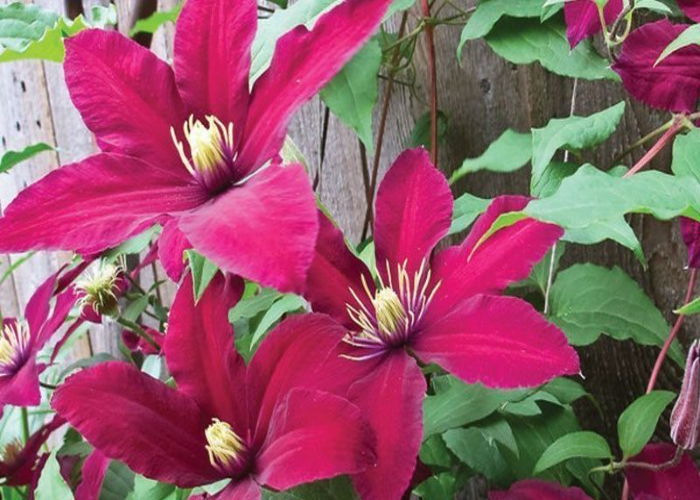
The Niobe is a clematis-flowering plant and a deciduous climber. These plants produce deep, velvety ruby-red flowers that can measure up to 15 cm. Their flowering period is from late spring to early autumn, and they are a shade-tolerant variety. The best results are obtained when plants are grown in moist but well-drained soil. These plants may be troubled by conditions such as clematis wilt and slime flux; hence, intermediate attention should be provided.
11. Clematis Andromeda
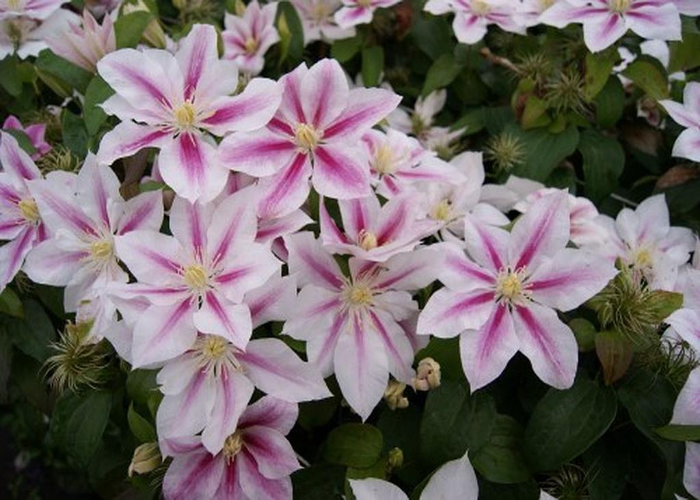
‘Delicious’ is the word that comes to one’s mind after having a look at the Clematis Andromeda flowers. These clematis-flowering plants produce beautiful creamy white flowers. During their first set of blooms, these plants produce semi-double-layered flowers, followed by single-layered blooms later. These shade-tolerant clematis demand to be planted in fertile, rich, moist, and free-draining soil. The saying while planting this clematis is that the first year goes to roots, the second year to shoots, and the third year, voila! Flowers!
12. Clematis Chelsea
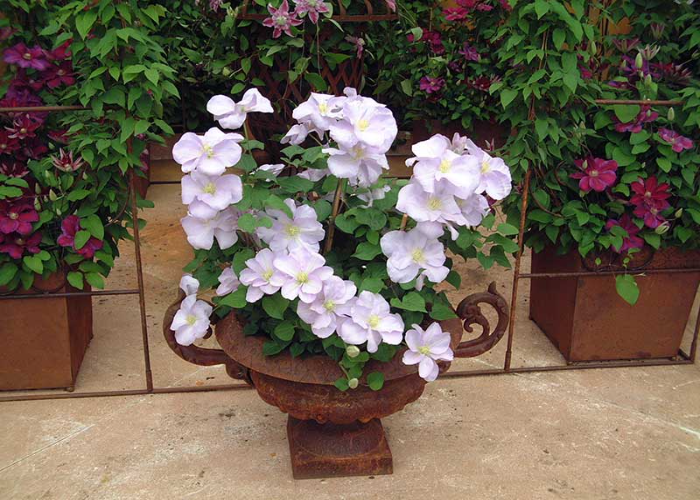
Clematis Chelsea is a free-flowering plant that is suitable for pots or shady garden areas. They produce lovely rounded flowers that are bluish-creamy-white in colour. Their compact nature makes them look more cute and royal in nature. They perform well when planted in nutrient-rich, well-drained soil and bloom in late summer and autumn. Using a soil-improvement compost will encourage the plant’s roots to grow deeper, which will keep them cooler during the summer.
13. Clematis Amber
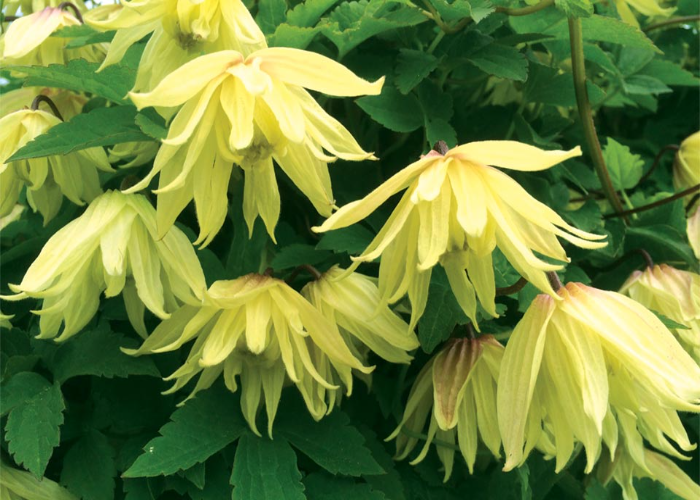
This clematis flowering plant produces double-layered yellow flowers with a pink colour near its stem. With its ravishing look, clematis amber will give your garden a touch of freshness. These shade-tolerant plants bloom from late April until June. These bell-like flower-producing plants don’t require tight maintenance and can grow in hard conditions. As they have fine root stems, planting them in water-logged soil is not recommended. With well-drained soil and adequate pruning, these plants produce the best results. Make sure to keep the plants from getting too wet during the winter to keep them in good health.
14. Clematis Bees Jubilee
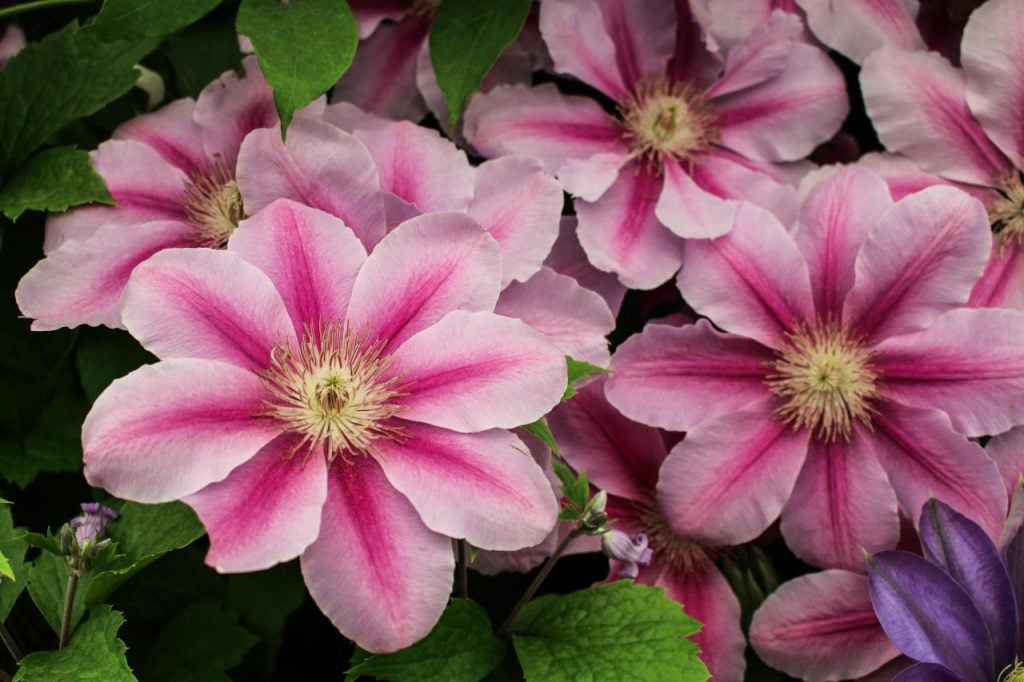
The last in our list of clematis for Shade UK is Clematis Bees Jubilee. These popular clematis flowering plants produce large pink blooms, giving your garden a classic look. Like any other large-flowered clematis plant, Bees Jubilee, too requires nutrient-rich soil to perform at its best. Placing good soil compost under the roots of these plants will help them go deep in the soil to maintain a low temperature during the summer. The flowering seasons of these clematises are late summer and autumn. It might take a few years for these plants to be well established and produce good results.
Caring for Shade-Tolerant Clematis
Planting: All clematis generally grow well when their roots are kept in cooler conditions. Hence, it is advised to keep the roots under shade even when the foliage might be in partial sunlight.
Watering: Water-clogged soil does harm to clematis. Watering once or twice a week will be adequate for your shade-tolerant clematis.
Fertilising: Providing an adequate amount of nutrient-rich fertilisers during the flowering seasons will bring out the best results.
Pruning: There are no specific instructions when it comes to pruning. Each variety of Clematis belongs to a specific pruning group. Pruning should be done after knowing about the pruning group of your clematis.
Support: Clematises are perennial climbers. Hence, they are best grown when provided with support to climb. Plant them near fences or walls for good results.
Pest and disease control: Keeping an eye out for pests or diseases is recommended, as clematis varieties have a risk of the same. If infected, cut out the dead parts of the plant and spray a medicinal solution to avoid further infection.
Can Clematis Grow in the Shade?
Yes, clematis can be grown in shade. You can find both partially shade-tolerant and fully shade-tolerant clematis. One thing to be noted in this scenario is that the plants grown in the shade won’t produce flowers in a lush way like the ones growing in direct sunlight. Even then, you can tune in to the nature of your plant’s blooming by adopting certain techniques.
It is normal for shade-tolerant clematis to produce fewer flowers than those in sunlight. Providing them with at least two hours of sunlight a day will positively affect flower production. It is also to be noted that clematis shouldn’t be planted on water-logged soil. Make sure the soil is drained and well-fertilized for best results.
Wrapping Up
It is often a headache when it comes to that part of your garden that is always in the shade. You have a good variety of beautiful clematis flowering plants to choose from to fix this problem. We hope our article saved you the task of looking through numerous lists of shade-tolerant clematises. You can choose the right plant for your home at your convenience.
With the right amount of care and support, these colourful plants will fill that one void at your place by filling it up with beautiful flowers!

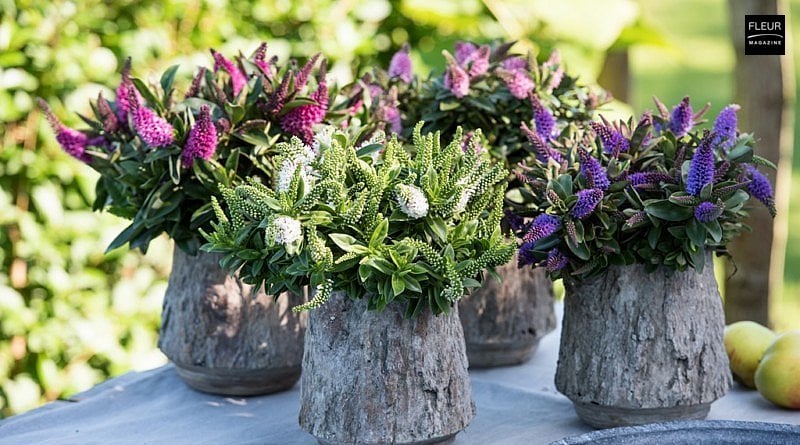
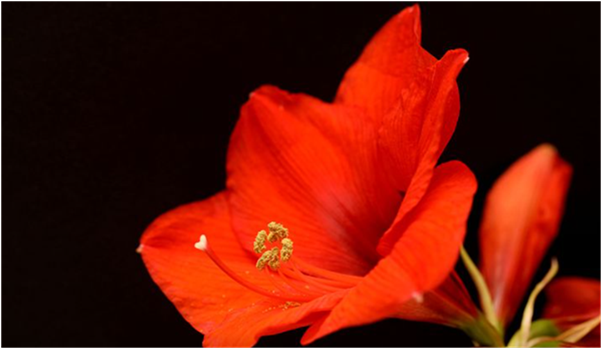
![How to Plant and Care for Clematis [UK]](https://staging.thearches.co.uk/wp-content/uploads/How-To-Grow-Clematis-scaled.jpg)
